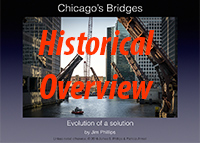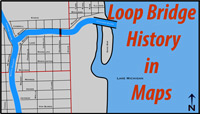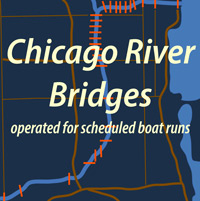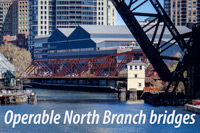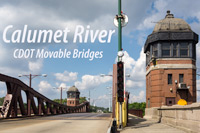
Elevation drawing of the W. Adams St. Bridge (circa 1925, courtesy of CDOT Division of Engineering)
“Nearly 1,000 boats and cars joined in a parade from Grant Park preceding the ceremony and a crowd of 5,000 watched the ribbon-clipping and cheered the speeches of Mayor Thompson, Commissioner of Public Works Wolfe and Deputy Commissioner Edward F. Moore.” That's the description printed in the August 27, 1927 Chicago Daily Tribune. The dedication of the new fixed trunnion bascule bridge at Adams St. was the cause of the celebration. This bridge had been under construction since 1923 and replaced the last of a series of swing bridges used at this location since about 1869.
This bridge is one of twelve downtown bridges built between 1913 and 1930. For bridge design, this era was significantly influenced by the 1909 Plan of Chicago. The bridge at Adams St. and its neighbor at Jackson Blvd. are the only two single deck bridges in this group that represent the Plan's “ideal” downtown river bridge. This ideal included the Beaux Arts styling in the houses as well as the placement of all bridge support below the deck, giving unobstructed views of the city from the bridge.
The key players in the design and construction of this bridge were Donald N. Becker (design engineer) and Edward H. Bennett (consulting architect). The Fitzsimmons & Connell Dredge & Dock Co. had the responsibility for the substructure and Strobel Steel Construction Co. erected the superstructure.
Because of the commercial traffic on the river at the time, this bridge was raised approximately 1,500 times in its first year of service. The nature of the Chicago River traffic transitioned from the heavier commercial to recreational traffic during the middle to late 20th Century. Now the forty or so annual bridge lifts are done to accommodate the spring and fall migrations of sail boats to and from Lake Michigan. It is estimated that the Adams St. bridge has been raised around 34,000 times in its 85 years of service.
The Adams St. bridge eventually became a part of Route 66. The storied highway began at the Michigan Ave. - Jackson Blvd. intersection in 1926. When Jackson Blvd. became an eastbound only street in 1955, Adams St. became the westbound section from Michigan Ave. to Ogden Ave. through the Loop.
The proximity of this bridge to Union Station makes it a busy route for approximately 33,000 pedestrians making the daily trek to and from commuter trains and work. An estimated 9,300 vehicles cross this bridge daily.
August 26, 1927 was an eventful day for Chicago. After the afternoon dedication of the Adams Street bridge, Buckingham Fountain was dedicated in a ceremony that evening.
The Adams street bridge was rebuilt in a 13 month project that began in January of 2016. The project included a complete restoration of the bridgehouses. The photos below provide a view during construction and the comparison of the remodeled bridgehouse to the 1926 engineering drawing. It is refreshing to see this workhorse restored to its original beauty.
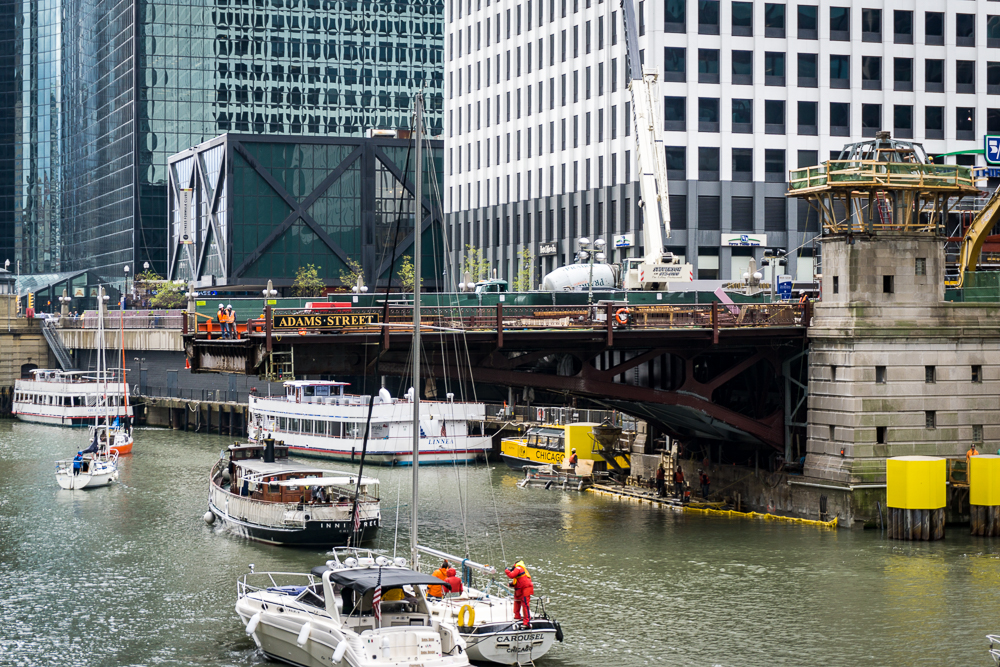
Fall boat run passing the Adams St. Bridge in 2016
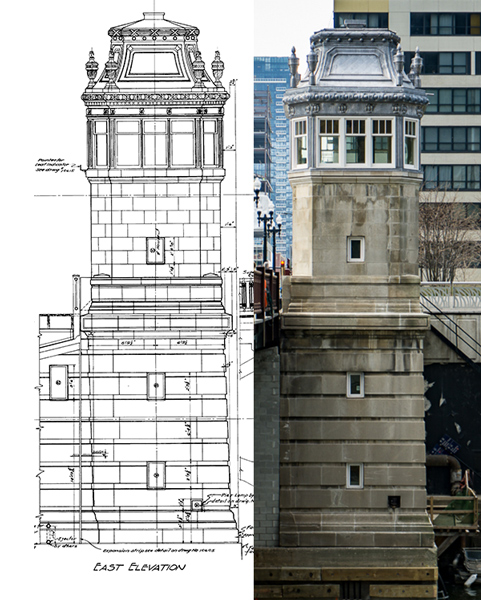
Comparison of the 1926 drawing and the restored bridgehouse
(East face of the western bridgehouse)

